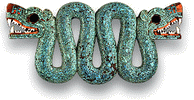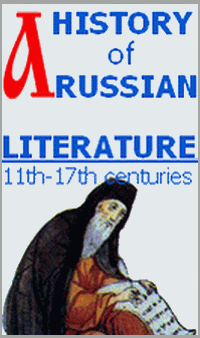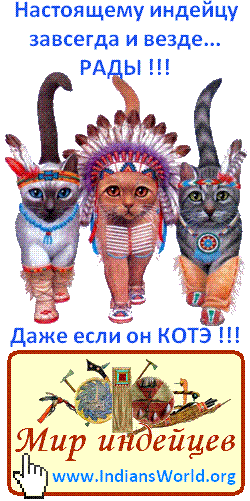The first contacts. The period of trade (1550-1700)
Category: HistoryEvents, during which there were first contacts between groups of people’s alien to each other, are very important for understanding the subsequent process of interferences. But what should we consider as the first significant contact in the area of the Midatlantic coast of America?
This event took place, perhaps, during a not very clear period of prehistoric time and it is connected either with visiting of New England coast by Vikings, maybe about 1000 BC or with Verrasano travel in 1524. Stories of Vikings were distributed in seaports of Europe and lived out till Columbus’s times who heard them. By the time Columbus had gone to the West, the colony of Vikings in Greenland fell into decay. However it is rather possible, that by then relatives of Vikings from Iceland had already been busy fishing in the sea near the coast of America. Anyway, Norman, Breton and English fishermen had annually visited these places at least since 1500 AD.
The XVI century was the period of intensive accumulation of knowledge both about the coast, and the St. Laurence River. Fishermen did it in the north basically; slave hunters did it in the south. Sometimes a casual researcher left the logbook to his posterity.
These people were also engaged in the trade with Indians. For furs they were given copper products, iron nails, knives, axes, beads, copper boilers and alcoholic drinks. But alongside with the goods newcomers delivered infectious diseases which had considerably more serious consequences, than import of all goods which had been taken together. Epidemics periodically were the reason of destruction of indigenous population which had no immunity against these illnesses.
Now here now there thousands of Indians perished, and the survived left these places, transferring infections deep into the country. Vahoonsonakok, the leader of the Nouhatan tribe, said to John Smith: « I saw, how two generations of my people died. From these two generations only I stayed alive ». Masasoyt, the leader of the Vampaioa tribe, said: « Englishmen have seized this ground because there was nobody to live on this ground». Similar statements were made also by representatives of the Delaware tribe.
Meanwhile fur trade gradually covered the whole area. With the purpose of buying up furs since 1535 French ships on a regular basis had visited the St. Laurence river valley. Much to the south, in the Potomac area river, European goods intended for sale, were distributed in the northeast on ancient American Indian tracks with the help of local intermediaries. Interbreeding wars for trading ways, for fur territories became frequent. Local groups were united in confederations or tribes. Across Northern America appearence of such confederations was the attribute of the fact that the trading border became mobile. Armed with more effective weapons of the European manufacture, northern Algonkins till 1581 superseded Iroques tribes from the area of the St.Laurence. This war influenced the entire northeast. Many Iroques people, who abandoned the St.Laurence River valley, joined the relatives living on the ground of the modern state of New York continued desperate struggle against the enemies. Their hope to return the control over the St.Laurence River valley suffered serious crash in 1609 when the Frenchmen maintained by Iroques enemies – Hurons and Algonkins, founded a trading post in Quebec.
In Pennsylvania the tribe of Susquehannoks by 1580 had to move down the river to the Chesapik Gulf. However they somehow managed the role of intermediaries in trade with the French. They extracted furs in their own territory, and also received them from dependent Delawares.
In the deep continent Mohicans and Hoosatoniks, Woppingers, Isops and Minisinks connected to them kept bringing down the positions in interbreeding struggle with attacking Iroques people. Legends of these tribes say about creation of the union, probably, as means of protection. Pekota people came to the east coast of Connecticut, having left places of the residence. Having superseded the local tribe Nayantik, they “cut” river basin Thames.
The beginning of XVII century was the time of fast growth of English, Dutch and Swedish trading posts along the entire Midatlantic coast. It was repeating that process which had already taken place in the valley of the St.Laurence River – the beginning of collisions among coastal Algonkins. Such groups of Indians as Pouhattans, Pekots and Vampanoas, were able to expand their influence.
Soon after (or, probably, before) 1620 allies of Mohicans made attacks at Delawares at the bottom watercourse of the Hudson River. Some groups of Delawares departed to the western part of Long Island, on the territory of the Metoak tribe, others moved to the territory of Staten-Island and settled in the state of New Jersey. Mohicans had achieved such power that even east Iroques were compelled to pay them tribute. From that time on leaders of Mohicans began to play the important role in carrying out interbreeding policy.
Coastal plains were never rich in fur animals and as the result of an intensive craft they began to disappear quickly. But coastal Indians found another source of the income – they mastered manufacturing of beads from the bowls named “wampum”. If earlier they were used only as a traditional symbol of respect, now they were used as the ambassador.
As the Dutch’s applied them as a change and as money for trade in furs and convinced the neighboring Englishmen also to get beads for trade with Indians, the need for wampums strongly increased. There was much material for manufacturing wampum’s the eastern part of Long Island, and it induced the Nekots people to grasp this area. However white dealers of furs lost interest to the coast and started to move the posts into the beginning of the rivers.
Already in 1614 y when the first European dealers had arrived to the river Hudson’s beginning, there began rivalry for the control over trade between Iroques tribe of Mohaic and the Mohicans. The course of events definitely turned for the benefit of Iroques when in 1623 the Dutch’s created a constant trading post in their territories. Soon the Dutch’s understood that the agreement with Iroques would be more favorable for them, than the agreement with the Mohicans. Trading directly with the Iroques, the Dutch’s followed the policy of the first colonists in Virginia, getting strong positions as the result of friendship with enemies of local Indians in the deep of the continent. With creation of the Fort – Orange (now Albany) in the state of New York the” Golden Age” of the Iroques and the decline of Algonkins’ influence began.
We cannot say that this blossoming is not consequence of the cultural superiority of the Iroques over other American Indian tribes as it was unsubstantially affirmed earlier. Though joint actions of the Iroques and the population of the Fort – Orange had compelled Mohicans to depart to the east of the river Hudson, periodic wars held the Iroques in a condition of defense in their settlements to the West from the river Shohari.
Trade of Europeans with Indians along the coast opened their access to the rivers, and this event with insignificant distinctions repeated in the area of each river valley. By 1632 Nekota people could not keep any more white dealers in a lower reaches of the rivers. On the place of present Hartford in the state of Connecticut there appeared the trading station which began decline of authority of Pekota people over the tribes subordinated to them had been created, and the end of it was their defeat in 1637. When the Swedes created the trading stations in the valley of the river Delaware Susquehanna people managed to keep the authority over local American Indian tribes, having concluded the union with the white colonizers.
The Iroques which Dutch’s supplied with the weapon in escalating amount distributed the influence in depth and in breadth of the country. Searching for new trade areas was the principal cause of their offensive actions. By 1640 their own territory had been appreciably exhausted. Attacking coastal Algonkins which still were engaged with furs, they demanded from them an annual tribute of wampum’s. Mohicans concluded the union favorable to them with the Iroques and as representatives of the last had kept the certain share of former authority over Indians of the lower Hudson. However at the same time they supported Sokoka people, Pokamtaka people and Pennakuka people in their attacks against the Iroques. These collisions called gravitation of some tribes of New England to the Frenchmen. Both geographical and political position of Mohicans explains their cautious maneuvering between interests of the Frenchmen and the Englishmen. Until then the English authorities had not interfered yet and the world has not been established at the end of 1671, the Iroques did not allow Mohicans to take part in their trade in the Middle West.
By 1675, after the victory of the Iroques over Sasquihanna people, the control over Delawares had passed to their hands. However approximately during the same time the price of the fur at the market had fallen down owing to the change of demand in Europe and almost utter annihilation of beavers in this area. Until then while trade in Albany still proceeded, its basis was connected with the furs delivered by the Iroques and members of the old confederation of Mohicans from the Great Lakes area.
Considering features of an initial stage of intrusion of Europeans, we think that even the earliest data do not give us an opportunity to present the real picture of the community of natives the way it had been before the contact with Europeans. These messages specify not only extensive changes in material area, but also on huge shifts in demographic structure of this area. Besides in bowels of the American Indian society resistance to penetration of the European colonization arose. Many of these changes will stay for us not clear for ever, but some of them are well clear to us, despite of all their complexity.
Every year white dealers came back to places of summer fishing of the certain local groups of Indians, and then established here constant trading posts. It caused moving of summer settlements of neighbor’s tribes. Now they began to settle together around posts. Some of these groups were only the rests of the former breeding associations. Not being able to live independently, they were united in larger breeding organizations. In sociopolitical structure of these tribes there was nothing new, on the contrary, they followed traditional related connections which got wider interpretation. Obviously, the clan structure in that kind that it had existed in the Iroques tribe had been accepted only by their nearest neighbors Algonkins which tried to adapt the way of life of local groups.
Management in such Algonkin tribe was in hands of that local group, where shopping centers of Europeans had been based. The choice of the management did not depend, as a rule, on Indians — white dealers conducted affairs with natives by means of the local leader and supported his aspirations.
Fur trade opened for Indians new value of the fact of possession land that caused aspiration to an establishment of exact borders of the hunting sites. Besides purchase of the ground for private property and possession of it was encouraged by the European dealers. All this led to appearance of family hunting sites within the limits of breeding territory.
Fur trade got acquainted Indians with new goods, but caused significant updating in social and economic customs. In the harmonious system previous to the contact with Europeans, work has been reasonably shared between men and women. However with arrival of Europeans the situation changed. Men began to give up their traditional occupations in order to satisfy dealers’ inquiries. As the most part of time men left for fur hunting or wampum’s manufacturing duties of women in an economy sharply grew. Thus, the balance during preparation of products has been broken. The increased death rate of the population and elimination of men from traditional economic activities, probably led to changes in the related system of Indians to matricentrism.1 certainly, the most obvious shifts were visible in the sphere of material culture. Everything, that was peculiar to the late prehistoric period, was left in the past, clearing the way to material culture of the European sample. Native forms of subjects of material culture tended to stability, but they were made from the material brought from Europe. Long time the imported European goods, such as steel axes, were a status symbol of their owners and only in the second turn a thing of utilitarian purpose. Indians had paid for all these European “riches” by their economic dependence, which resulted after decline of fur trade in and chronic underrating of indigenous population.
1 – It is the theory about primordial of patriarchy and occurrence of matriarchy owing to colonization and trade in furs it is subjected to scientific criticism in works of the Soviet researchers. (See. J.P.Averkieva, Indians of Northern America, M, 1974.)


